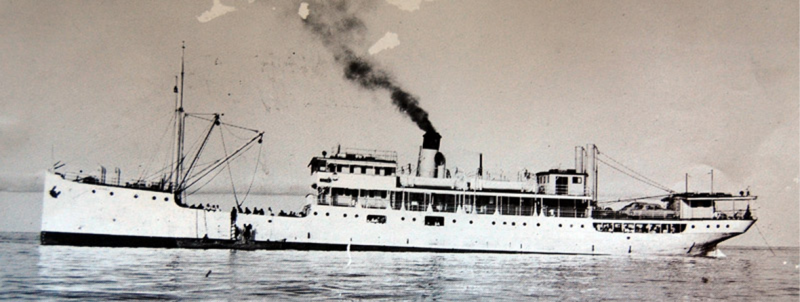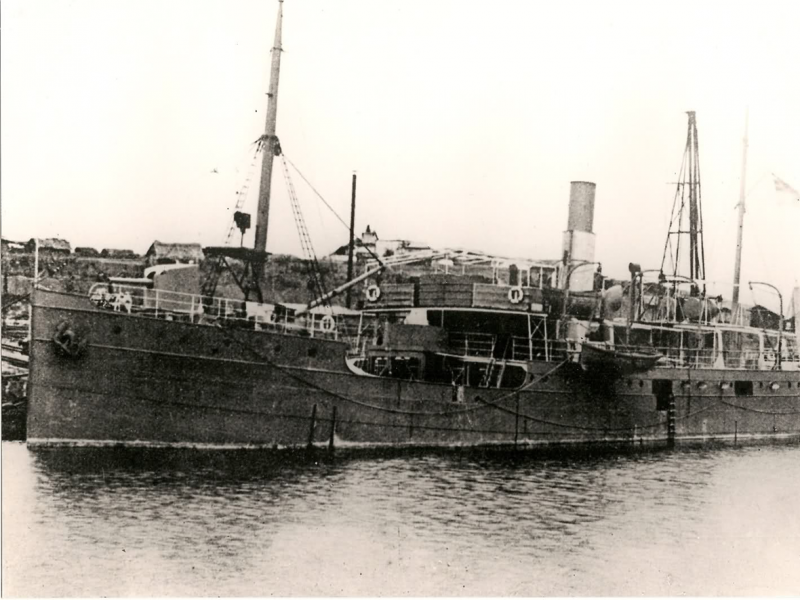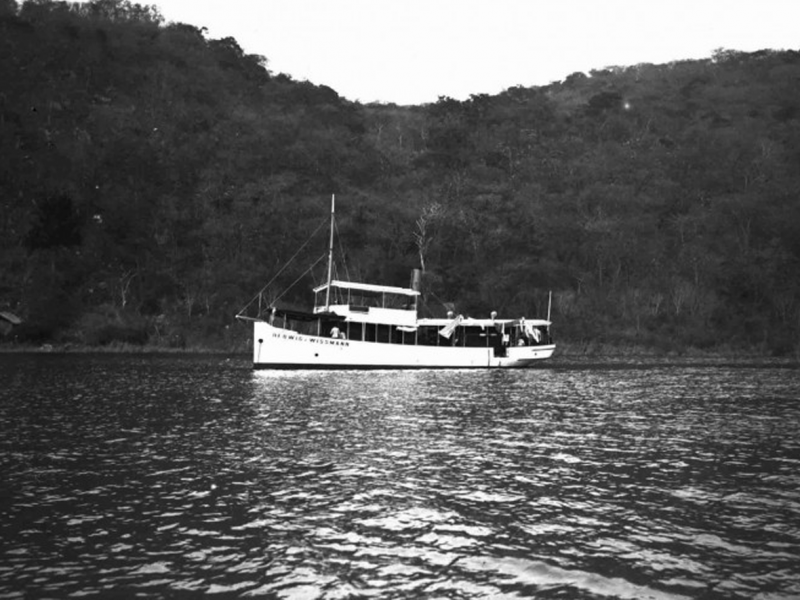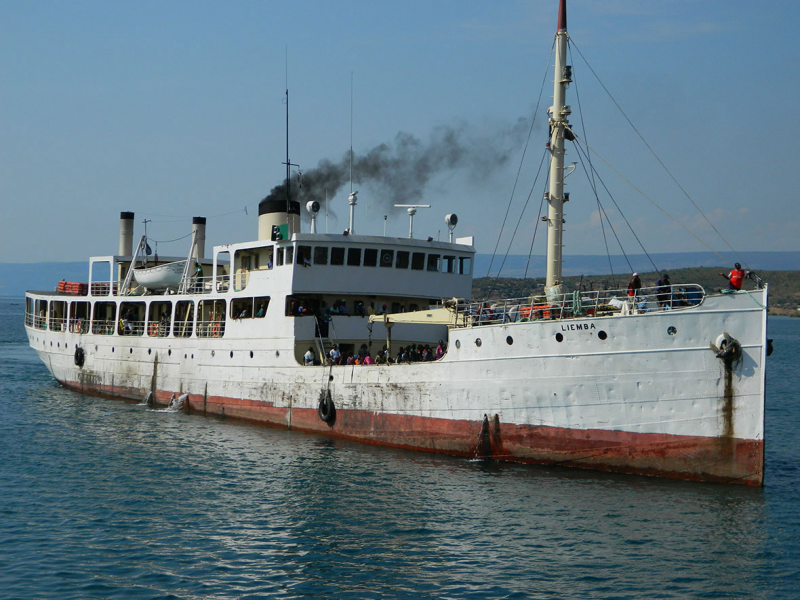Old steamer, living on Lake Tanganyika for over 100 years
But some ships story prepared a truly exciting and long journey through the waves of time. They participated in battles, went through wars, saw the birth and death of states, passed from one hand to another. The biography of such ships sometimes continues to grow to this day.
A striking example is the German transport ship Graf von Götzen, once converted into a warship. He became a direct participant in the First World War, was flooded and rebuilt, went through several modernizations and, after more than 100 years, still serves the people. How did it happen?
Major European powers have been expanding for centuries. Portugal, Spain and France controlled large territories, not to mention the British, who called their country "an empire over which the sun never sets." Germany, somewhat late for the colonial division of the world, could not compete with them. By the beginning of the XNUMXth century, it had only small colonies in Africa. They were present-day Togo, Cameroon, Namibia, Tanzania, Rwanda and Burundi.
The Germans, with their characteristic thoroughness, were engaged in the improvement of their overseas possessions. Infrastructure, railways, agriculture - all this was intensively developed. German East Africa progressed most actively. Its western border ran along Lake Tanganyika. The other side belonged to Belgium, and the British possessions were located on the southern side of the lake. Kaiser Wilhelm II was forced to fight for leadership in a region where trade and passenger-and-freight traffic were booming.
For this, it was decided to build a large-scale port on the shores of the Indian Ocean, as well as strengthen the fleet on Lake Tanganyika. In wartime, the navy served as a force that could fight the enemy, and in peacetime it promoted the development of trade. Before World War I, three steamboats were ordered in Papenburg at the Meyer-Werft shipyard, one of which was built and transported to Africa by 1914.
At that time, the transportation of such a large object was a difficult task. However, they dealt with it: the steamer was disassembled into parts to be transported on transport ships and by rail, after which it was assembled on the spot. Graf von Götzen, named after the explorer and ex-governor of East Africa, was ceremoniously launched in February 1915.
It was a large ship: 70 meters long, 800 tons displacement. Two steam engines made it possible to develop 11-12 knots of speed, which was decent enough for the given water area. The place of registration was the port of Kigoma, the main port on the shores of the Tanganyika. During the First World War, the new steamer was no longer considered a civilian vessel. An order came from the metropolis to prepare for hostilities and to form combat-ready units from the available ships. Having received 105 and 88 mm main guns and two 37 mm auxiliary guns, the steamer was renamed SMS Graf von Götzen.
The fighting in Africa was strikingly different from what is happening in Europe. No head-to-head battles, only ambushes and surprise attacks. At the start of the war, the Germans decided to destroy the only Belgian steamer on Lake Tanganyika, Alexandre Del Commune. The first attempt was made on 23 August 1914 on the Lukuga River, where the Belgian took refuge under the protection of coastal batteries. The steamer Hedwig von Wissmann (at that time the only ship of the German naval forces of Tanganyika), being in the zone of enemy artillery, fired at Alexandre Del Commune for about two hours. Having received a significant number of hits in the boiler plant, the seriously damaged Belgian steamer washed ashore. The Germans, due to skillful maneuvering, did not receive any damage at all.
In the fall of 1914, the German flotilla on the lake received reinforcements in the form of an airlifted steamer Kingani. For the most part, he was engaged in intelligence and supply.
Soon the Germans received information that Alexandre Del Commune had been launched again in Albertville. And the second attempt to deal with the Belgian was crowned with success. On October 22, 1914, Hedwig von Wissmann approached Albertville and targeted fire, under fire from enemy batteries, destroyed Alexandre Del Commune.
A year later, on December 26, 1915, the British won back: the German Kingani, who was patrolling the north of Tanganyika, was ambushed. The other two German ships were attacked at the same time by the Belgian aviation, because of which they could not come to the rescue. In the end, the British captured the Kingani and captured the crew.
In January 1916, Hedwig von Wissman set out in search of the missing steamer. His meeting with English boats at the mouth of the Lukuga ended unsuccessfully: the steamer was sunk. The German lake flagship Graf von Götzen followed, but after being discovered in the enemy port of Kingani, it was decided not to attack the fortified positions of the British.
Active hostilities ended, Graf von Götzen returned to Kigoma, where his combat capability was maintained. In this port, in June 1916, an attack was made on the steamer, which almost became his last. The pilots of the Belgian airplanes dropped several aerial bombs, claiming later that they caused serious damage. But, as it turned out, this information did not correspond to reality: the Germans themselves revealed only minor damage from shrapnel.
For Germany in 1916, the war was not going well. Events in Europe, of course, affected the colonies as well. In particular, it was ordered to strengthen the coastal defenses. For this, the guns from Graf von Götzen were removed and transported to Kasanga. The steamer ceased to be a combat unit and lost the ability to actively influence the course of hostilities. Later, the Germans left Kigoma and took the steamer to the mouth of the Malagarasi River. The captain, wishing to preserve his ship, ordered to dismantle all the mechanisms, cover them with a layer of grease, pack them in waterproof cases and bury them near the lake. The hull of the steamer was filled with sand, oiled and flooded off the coast.
However, the fate of Graf von Götzen did not end there. After the war, the ship came out of hibernation. It was awakened by the British, who restored the ship in 1927 and gave it a new name - Liemba. The former German lakeside flagship resumed its cruises in Tanganyika, carrying passengers until 1970. Then the steamer retired again and was under repair for 6 years, but after its completion it continued to work.
During the 1997 Congolese wars, he transported over 75 refugees. For a long time, Graf von Götzen was the only link with civilization for the locals.
Today, the last ship of the Kaiser fleet, which managed to take a direct part in the events of the First World War, continues its voyages in Tanganyika. Another renovation in 2016–2019 gave it new strength. Now this steamer is extremely popular and loved by tourists!
Remembering the events of the First World War, we invite you to plunge into the history of the creation and combat path of the cruiser "Askold" - the famous ship that fought at the same time with Graf von Götzen, but on the other side of the world. One of the episodes of the 1:42 Scale program from Wargaming is dedicated to this hero of the Russo-Japanese War and the First World War. Happy viewing!




Information